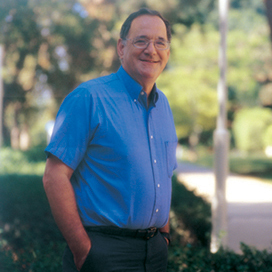Are you a journalist? Please sign up here for our press releases
Subscribe to our monthly newsletter:

When Itai Carmeli first came to his Ph.D. adviser with his results, he was gently told to get back to work. “I told him there was no such physics,” recalls a smiling Prof. Ron Naaman of the Institute’s Chemical Physics Department. “A year later he was back - with similar findings.”
Carmeli had been tinkering around with organic molecules, which he used to create extremely thin, single-layered films on a gold substrate. The surprise was that the films were behaving like a powerful magnet.
There are different types of magnets, Naaman explains, from the common fridge magnets we all played with as kids, which always display magnetic behavior; to temporary magnets such as paperclips and nails, which only work when exposed to a strong magnetic field; to magnets powered by an electric current. Nearly all of these contain one or more components with magnetic properties. The twist in our case was that the films lacked any magnetic materials.
In their study, recently published in Physical Review Letters and the Journal of Chemical Physics, the Institute team experimented with films made of three types of organic molecules. The molecules each had a positive and negative pole, and they were tightly packed, such that their negative poles faced the gold substrate, while their positive poles faced away. And this, says Naaman, might have been the trick: while opposite charges are known to attract, like charges repel, particularly when in close proximity on the surface of the film. The team - which included physicist Prof. Zeev Vager and materials scientists Prof. Shimon Reich and Dr. Gregory Leitus - believes that this repulsion force causes electrons to flow from the gold substrate to neutralize charged sites on the molecules in an attempt to stabilize the system. This extremely thin layer of flowing electrons in turn induces an electric current - forming a leading type of magnet dubbed an electromagnet (see box).
“We believe that the electrons are behaving as if in a co-op,” says Vager. “Electrons usually orbit in small circles, around individual molecules; but in this case they may be orbiting domains in the film containing hundreds of thousand of molecules, thus creating an electric current that transforms the system into a powerful magnet. Films of this sort might feature in electromagnets used in futuristic high-density discs and other electronics.”
Birds do it, bees do it, so do whales, salmon and, according to a new study, even Caribbean spiny lobsters - all use the Earth’s magnetic field as a navigating compass.
Magnetism was first discovered by the ancient Greeks and Chinese. Experimenting with the materials of their natural environment, they found that certain rare stones, called lodestones, attract small pieces of iron. Adding to their “magic,” these stones were found to always point in a north-south direction when suspended on a string. They quickly became invaluable to navigators, fortune-tellers and builders.
During the 13th century, French-man Pierre de Maricourt discovered that magnets had two magnetic poles - north and south - and in the 1600s, England’s Sir William Gilbert concluded that Earth itself was a giant magnet with north and south poles - which explains the wonder of animal migration treks.
The 1800s saw the first connection made between electricity and magnetism, when Danish physicist Hans Christian discovered that running an electric current through a wire creates a magnetic field - a phenomenon that quickly became known as electromagnetism. And today, this form of magnetism is everywhere - in the electric motors in refrigerators, washing machines and racecars; the read/write heads of discs and videotape players, and far more.
Prof. Naaman’s research is supported by the Fritz Haber Center for Physical Chemistry; the Ilse Katz Institute for Material Sciences and Magnetic Resonance Research; the Wolfson Advanced Research Center; the Philip M. Klutznick Fund for Research, Chicago, IL; and Dr. Pamela Scholl, Northbrook, IL. He is the incumbent of the Aryeh and Mintze Katzman Professorial Chair.